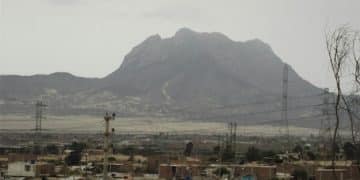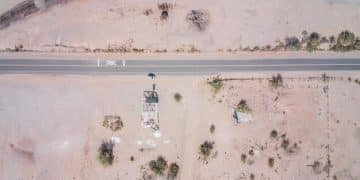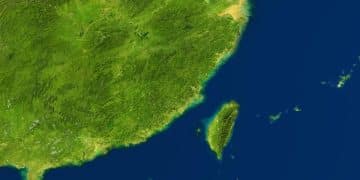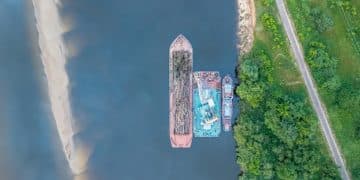US Response to Middle East Instability: Analysis & Strategies
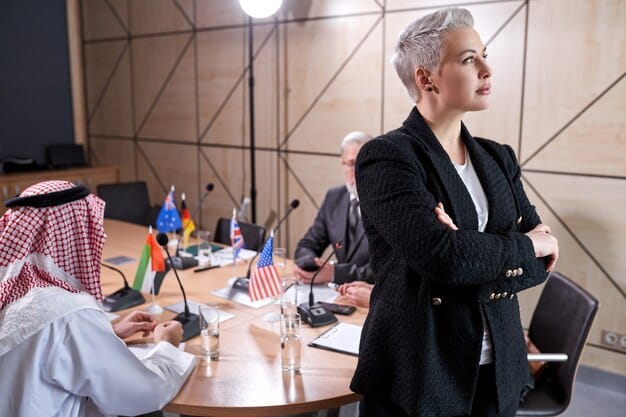
The US response to the growing instability in the Middle East is a multifaceted approach involving diplomatic efforts, military presence, economic aid, and support for regional allies, aiming to protect US interests and promote stability.
The Middle East has long been a region of significant geopolitical importance, fraught with complex challenges and persistent instability. Understanding the US response to the growing instability in the Middle East: A Comprehensive Analysis requires a deep dive into historical context, current strategies, and potential future implications.
Understanding the Roots of Instability
To effectively analyze the US response, it’s crucial to first understand the multifaceted roots of instability in the Middle East. These include historical factors, political dynamics, economic disparities, and the rise of non-state actors.
Historical Context
The legacy of colonialism, the drawing of artificial borders, and external interference have all played a significant role in shaping the region’s current landscape.
Political and Economic Factors
Authoritarian regimes, lack of democratic institutions, corruption, and unequal distribution of wealth have fueled popular discontent and instability.

- The Arab Spring uprisings highlighted the deep-seated frustration with autocratic rule and lack of opportunities.
- Sectarian divisions and ethnic tensions exacerbate conflicts, often exploited by regional and international powers.
- The rise of extremist groups like ISIS has further destabilized the region and posed a significant security threat.
- Climate change and resource scarcity are emerging as additional drivers of conflict and displacement.
The complex interplay of these factors has created a volatile environment, making the Middle East a focal point of international concern and requiring a nuanced and strategic approach from the United States.
The Evolution of US Policy in the Middle East
US policy in the Middle East has evolved significantly over the decades, shaped by changing geopolitical realities and strategic interests. From Cold War containment to the War on Terror, the US has played a prominent role in the region’s affairs.
Cold War Era
During the Cold War, the US focused on containing Soviet influence, supporting friendly regimes, and securing access to oil resources.
Post-9/11 Era
The September 11 attacks led to a shift in US policy, with a greater emphasis on counterterrorism and military intervention in countries like Afghanistan and Iraq.
The US has often pursued a contradictory approach, balancing its support for autocratic regimes with its stated commitment to promoting democracy and human rights creating dilemmas regarding the countries that it is supporting in the region.
- The US invasion of Iraq in 2003 had far-reaching consequences, contributing to sectarian violence and the rise of ISIS.
- The US has provided significant military and economic aid to Israel, a key strategic ally in the region.
- The US has also been involved in diplomatic efforts to resolve conflicts, such as the Israeli-Palestinian conflict.
Understanding this historical evolution is essential to comprehending the current US approach to the region and the challenges it faces.
Key Components of the US Response Today
The US response to the growing instability in the Middle East today involves a multifaceted approach, including diplomacy, military presence, economic aid, and support for regional allies. These elements are designed to protect US interests and promote stability.

Diplomatic Efforts
The US engages in diplomatic efforts to de-escalate conflicts, promote dialogue, and mediate disputes between regional actors.
Military Presence
The US maintains a significant military presence in the Middle East, primarily aimed at deterring aggression, combating terrorism, and protecting freedom of navigation.
The US provides substantial economic and military assistance to countries like Egypt, Jordan, and Saudi Arabia exchanging assistance for political cooperation and stability.
- The US played a key role in the Iran nuclear deal (JCPOA), but later withdrew from the agreement.
- The US has been involved in efforts to resolve the conflicts in Syria, Yemen, and Libya.
- The US has worked with regional partners to counter ISIS and other terrorist groups.
These components form the backbone of the current US strategy in the Middle East, reflecting a complex balancing act between competing interests and priorities.
The Role of Regional Allies and Partners
The US relies heavily on regional allies and partners to advance its interests and promote stability in the Middle East. These alliances are based on shared security concerns, economic ties, and political alignment.
Strategic Alliances
The US maintains strong alliances with countries like Israel, Saudi Arabia, and Jordan that share security goals with the US in the region.
Partnerships
The US also cooperates with other regional actors, such as the United Arab Emirates and Qatar, on specific issues like counterterrorism and economic development.
The US has faced difficult choices regarding its support for certain regimes, especially in light of their human rights records and domestic policies.
- The US has worked closely with Israel on security cooperation, intelligence sharing, and joint military exercises.
- The US has provided significant military assistance to Saudi Arabia, despite concerns about its role in the Yemen conflict.
- The US has sought to balance its relationships with Sunni Arab states and its approach to Iran.
The effectiveness of the US approach in the Middle East is heavily dependent on maintaining strong relationships with key allies and partners.
Challenges and Criticisms of US Policy
US policy in the Middle East has faced numerous challenges and criticisms, both domestically and internationally. These include concerns about the effectiveness of military interventions, the impact of US policies on regional stability, and the human cost of conflict.
Criticisms
Critics argue that US interventions have often exacerbated instability, fueled resentment, and undermined local ownership.
Challenges
The rise of new regional powers, such as Iran and Turkey presents challenges to US hegemony. The US has to respond to this shifting power dynamic as the region and its influence changes.
US policy has been accused of inconsistency, prioritizing short-term interests over long-term stability, and supporting authoritarian regimes at the expense of democratic values.
- The Iraq War is widely seen as a major foreign policy blunder, contributing to the rise of ISIS and destabilizing the region.
- US support for autocratic regimes has been criticized for undermining democratic aspirations and fueling popular discontent.
- The US has struggled to balance its relationships with Saudi Arabia and Iran, two major regional rivals.
Addressing these challenges and criticisms is essential to developing a more effective and sustainable US approach to the Middle East.
Future Directions and Potential Strategies
Looking ahead, the US faces critical choices about the future direction of its policy in the Middle East. These choices will require a careful assessment of US interests, regional dynamics, and the potential consequences of different strategies.
Potential Strategies
Some analysts advocate for a more restrained approach, focusing on diplomacy, conflict resolution, and economic development.
Future Directions
Others argue for a continued US presence to deter aggression, combat terrorism, and protect US interests.
The US should prioritize working with regional partners to address the root causes of instability, such as poverty, inequality, and lack of political participation.
- The US should seek to de-escalate regional tensions, promote dialogue, and mediate disputes between rival powers.
- The US could play a more active role in supporting democratic reforms, civil society, and human rights.
- The US should invest in economic development and job creation to address the underlying drivers of instability.
The future success of the US approach in the Middle East will depend on its ability to adapt to changing circumstances, learn from past mistakes, and forge a more sustainable and inclusive vision for the region.
| Key Point | Brief Description |
|---|---|
| 🌍 Historical Context | Colonial legacies and artificial borders contribute to current instability. |
| 🤝 Regional Allies | US relies on allies like Israel and Saudi Arabia for regional stability. |
| 🛡️ Military Presence | US maintains a military presence to deter aggression and combat terrorism. |
| 🕊️ Diplomatic Efforts | US engages in diplomacy to de-escalate conflicts and mediate disputes. |
US Middle East Policy: An FAQ
▼
Key US interests include ensuring access to oil, combating terrorism, supporting allies like Israel, and preventing the spread of nuclear weapons among countries in the region.
▼
Since 9/11, US policy has focused more on counterterrorism, leading to military interventions in Afghanistan and Iraq and increased military spending in the region.
▼
The US has historically played the role of a mediator in the conflict, providing financial and military aid, and pushing for a two-state solution supporting the state of Israel.
▼
Common criticisms include supporting authoritarian regimes, exacerbating regional conflicts, and intervening militarily without clear long-term strategies, and ignoring human rights abuses.
▼
Future policy may focus on reducing military involvement, prioritizing diplomacy, and supporting economic and political reforms to promote regional stability and more beneficial relationships.
Conclusion
In conclusion, the United States faces a complex and evolving landscape in the Middle East. An effective response to the region’s instability requires balancing competing interests, engaging with regional partners, and addressing the underlying factors that fuel conflict and extremism.

